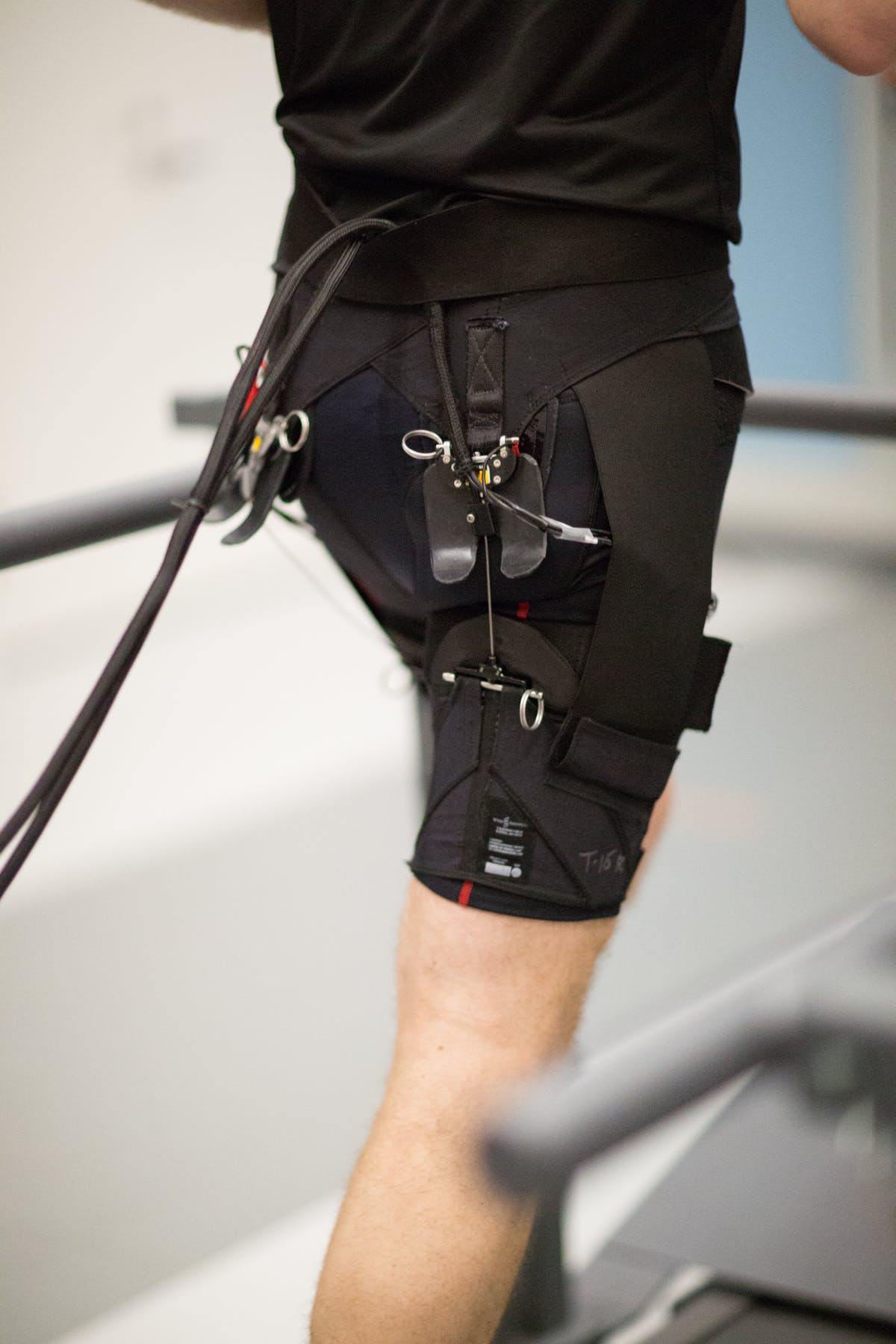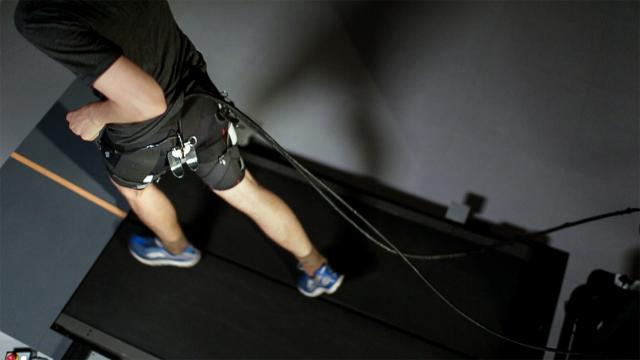Researchers from Wyss Institute and Harvard SEAS have developed a soft robotic exosuit that significantly boosts a person’s running performance. The device requires a tether and external power supply to work, but once it becomes portable, it could help athletes run faster and further than before, smashing their existing running records without having to undergo additional training.
Credit: The Wyss Institute at Harvard University
In tests on treadmills, the device was shown to reduce the metabolic cost of running by 5.4 per cent (metabolic cost being the amount of oxygen consumption and carbon dioxide produced while running). That might not sound like much, but to a long distance runner, it’s a substantial increase in performance. In real terms, it could make a 42km marathon feel like 40km, or improve a runner’s pace from 5:44km/s to 5:28km/s. These findings now appear in the journal Science Robotics.
The textile-based design is lightweight and moves with the body. Flexible wires are connected to an external actuator unit, which provides the power. When a person runs on a treadmill with the suit on, the actuator pulls on the wires. Once activated, the wires perform the function of a second set of hip extensor muscles, applying force to the legs with each stride.
Designing the device was one problem, but knowing when the machine should exert pressure and engage the wires during running proved to be a different challenge entirely. To figure out the optimal way to boost the running stride, the researchers use two models — one based on observations of a person running, and another based on a simulation of exoskeleton-assisted running. Surprisingly, the computer model produced the best results, taking the movement of the whole body into account rather than focusing on individual body parts.

A system of actuation wires attached to the back of the exosuit provides assistive force to the hip joint during running. (Credit: The Wyss Institute at Harvard University)
There’s still plenty of room for improvement. The researchers only considered two different actuation profiles (the timing of the wire triggering), so it may be possible to increase running efficiency further.
Importantly, the exosuit was tested exclusively on treadmill conditions. As many athletes can attest, treadmills are fine and well, but they’re a poor approximation for running in the real world. In normal running conditions, runners push themselves forward off the ground, while on treadmills, the feet and legs are pulled under the body, which makes running a bit easier. The researchers will have to take these kinesthetic differences into account once the device becomes portable.
And yes, creating an untethered version of the exosuit is a priority for the researchers. “Our goal is to develop a portable system with a high power-to-weight ratio so that the benefit of using the suit greatly offsets the cost of wearing it,” said Lee in a statement. “We believe this technology could augment the performance of recreational athletes and/or help with recovery after injury.”
It could be years before we see a battery-powered exosuit, but should it ever happen, it could revolutionise both professional and recreational running. It could complicate races greatly, and result in cheating. Once on the market, organisers will have to check runners to make sure they’re not wearing these devices during sporting events.
As a final note, this study was funded by the Department of Defence’s DARPA Warrior Web program. So in addition to producing super athletes, this device could eventually be used to produce super soldiers.
